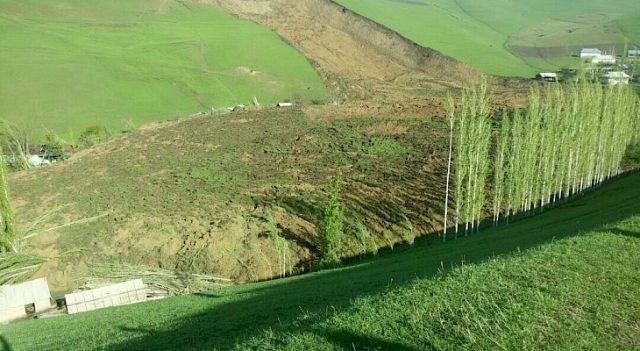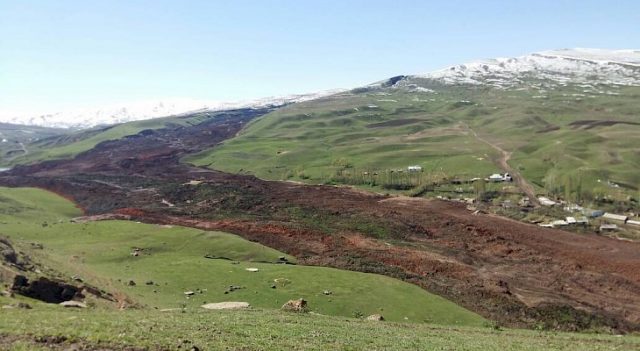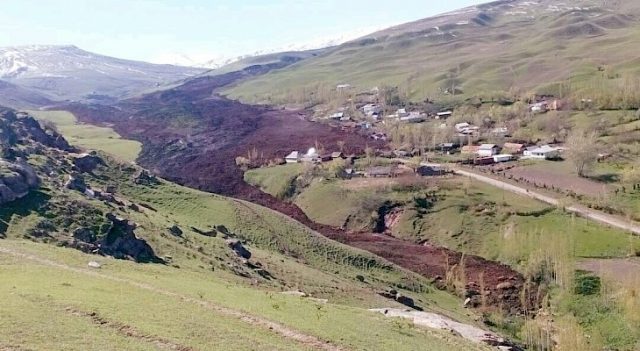2 May 2017
Ayu in Osh, Kyrgyzstan: a large landslide has killed 24 people, and another large flowslide in Uzgen region
Posted by Dave Petley
Ayu in Osh, Kyrgyzstan: a large landslide has killed 24 people
At 7 am local time in Ayu in the Osh region of Kyrgyzstan a large landslide swept away and buried 11 houses, killing 24 people. The best image of the landslide is available on the KABAR website:

The large landslide at Ayu in Osh, which killed 24 people on Saturday. Via KABAR
.
Once again this looks to be a large, deep-seated landslide in loess. Interesting the main scarp appears to be predominantly translational, but with an unusually deep shear surface. KABAR also has a decent image of the deposit:

The deposit of the Ayu landslide in Osh, Kyrgyzstan. Via KABAR
.
This image suggests that this landslide may have been less mobile than many others that we have seen in Kyrgyzstan of late. The trigger for this landslide was apparently heavy rainfall. Reuters reports that the local people had been warned of the risks of landslide at this location.
A massive flowslide in the Uzgen region on Sunday
Meanwhile an even more impressive, though fortunately less deadly, landslide occurred in the Uzgen region of Kyrgyzstan on Sunday, according to KABAR. Details are sketchy at present – 11 houses were apparently buried, together with a school, a kindergarden, a mosque and a medical facility – but with no human losses. The images are impressive:

The huge flowslide in Uzgen region of Kyrgyzstan on Sunday, via KABAR
.

The huge flowslide in Uzgen Region of Kyrgyzstan on Sunday, via KABAR.
.
This appears to be a very large and very mobile landslide, but with a peculiar flow path. Again, the trigger is not described – it would be interesting to see the headscarp area,
Kyrgyzstan appears to be suffering a spate of large landslides this year; the reasons are unclear. They beautifully illustrate the role of material properties in defining the behaviour of the landslide. In the case of these slides in Kyrgyzstan, the presence of loess leads to these repeated flowslide events that show high mobility, with resultant heavy losses.


 Dave Petley is the Vice-Chancellor of the University of Hull in the United Kingdom. His blog provides commentary and analysis of landslide events occurring worldwide, including the landslides themselves, latest research, and conferences and meetings.
Dave Petley is the Vice-Chancellor of the University of Hull in the United Kingdom. His blog provides commentary and analysis of landslide events occurring worldwide, including the landslides themselves, latest research, and conferences and meetings.
There is decently detailed ESRI World Imagery at this location :
http://arcg.is/1eKDDG
Note the landslide a bit south, just east of the valley confluence, with other ancient landslides at the south.